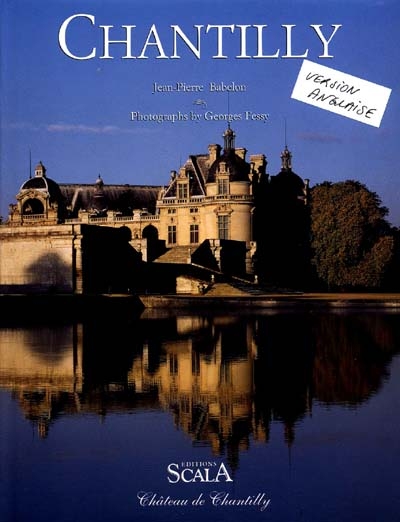en savoir plus

Carte fidélité
Permet à tous ses détenteurs d'obtenir 5% de réduction sur tous les livres lors du retrait en magasin (réduction non cumulable avec les réductions de type étudiant).
Offre également un certain nombre d'avantages auprès de nos partenaires.
Wishlist
Avec les favoris, retrouvez dans un espace les sélections effectuées au fur et à mesure de vos navigations dans le site.
Constituez pour votre usage personnel vos listes de livres en prévisions d'achats futurs et votre sélection d'articles, dossiers, événements, vidéos ou podcasts préférés ou à découvrir plus tard...
Il suffit simplement de cliquer sur "Ajout Favori" sur chaque page qui vous intéresse pour les retrouver ensuite dans votre espace personnel.
Requiert un compte Mollat
Mes Alertes
Requiert un compte Mollat
Chantilly
Auteur : Jean-Pierre Babelon
Auteur : Georges Fessy
en savoir plus
Résumé
L'histoire passionnante du château et de ses occupants. De nombreux documents anciens ainsi que des plans permettent de visualiser les différents états de Chantilly, des portraits des propriétaires et hôtes de marque, et de magnifiques photos actuelles pour suivre, siècle après siècle, l'aventure de ce monument rival de Versailles. ©Electre 2025
Lire la Quatrième de couverture
Réduire la Quatrième de couverture
Henri IV, a frequent guest at Chantilly, called it "the most beautiful house in France". The château strikes visitors with its originality, expressed both in the arrangement of the natural site and the story of the men and women who shaped it and dwelt there.
The manner in which the gardens are laid out is the first indication of Chantilly's exceptional nature ; Le Nôtre chose to create a random order, abandoning the option of a single axis as seen at Versailles.
The architecture too demonstrates undeniable originality. The château's residents - the d'Orgemonts, Montmorencys, Condés and later the duc d'Aumale - all had the same fondness for the place, which prompted them constantly to build, demolish, rebuild and alter it, calling on the finest architects of the day : Chambiges, Bullant, Mansart, Aubert and Daumet.
The rich history of France has led Chantilly to occupy the eminent position appropriate to it. The château surrounded by its huge estate has had a place in that history from the start of the Capetian Dynasty. Over the centuries it belonged to outstanding men who were ever closer to the power of the monarchy, and then to the royal family itself. By the end of the seventeenth century, in the hands of these champions of aristocratic power, Chantilly had become virtually a rival principality to Versailles, its splendid festivities and legendary hunts attracting large numbers of courtiers, artists and men of letters. At the time of the French Revolution the Grand Château was dismantled, and it was not until the duc d'Aumale, who inherited Chantilly half a century later, undertook major restoration work that the château was returned to its former splendour. He also made it the setting for the superb collections of paintings and works of art he had amassed throughout his life. In 1887 the duc bequeathed the whole complex to the Institut de France which still owns it, enjoining them to open the museum and gardens to the public.
It is the thrilling story of this place and its occupants that is told here. The old documents and plan drawings allow us to visualise the château century after century, portraits acquaint us with its owners, and superb photographs of the house and grounds today enable us to follow the adventure of Chantilly right up to the present time.
Fiche Technique
Paru le : 12/10/1999
Thématique : Autres réalisations architecturales Architecture Renaissance - Classique et Baroque
Auteur(s) : Auteur : Jean-Pierre Babelon Auteur : Georges Fessy
Éditeur(s) :
Scala
Collection(s) : Beaux livres
Contributeur(s) : Photographe : Georges Fessy
Série(s) : Non précisé.
ISBN : Non précisé.
EAN13 : 9782866562045
Reliure : Relié
Pages : 248
Hauteur: 27.0 cm / Largeur 21.0 cm
Épaisseur: 2.4 cm
Poids: 1335 g
